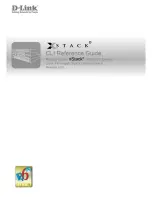
162
Appendix 1 Glossary
SNTP
Simple Network Time Protocol (SNTP), using UDP datagram packets at the transport layer, is a networking
protocol for clock synchronization between computer systems over packet-switched, variable-latency data
networks.
HTTP
The Hypertext Transfer Protocol (HTTP) is an application protocol for distributed, collaborative, hypermedia
information systems. HTTP is the foundation of data communication for the World Wide Web, which defines
information format, transmission mode, WEB server and browser actions. HTTP functions as a request-response
protocol in the client-server computing model. A web browser, for example, may be the client and an application
running on a computer hosting a web site may be the server. The client submits an HTTP request message to the
server. The server, which provides resources, such as HTML files and other content, or which performs other
functions on behalf of the client, returns a response message to the client. Another primary standard of controlling
how World Wide Web works is HTML, which defines how web pages are formed and displayed. Any web server
includes a HTTP daemon background program in addition to web files. This program is designed to expect and
process HTTP requests. A web browser, as an HTTP client, is used for sending requests to the server. An HTTP
client initiates a request by establishing a Transmission Control Protocol (TCP) connection to a particular port on a
server (typically port 80). An HTTP server listening on that port waits for a client's request message. Upon
receiving the request, the server sends back a status line, and a message of its own.
Auto-negotiation
Auto negotiation is an Ethernet procedure by which two connected devices choose common transmission
parameters, such as speed, duplex mode, and flow control. In this process, the connected devices first share their
capabilities regarding these parameters and then choose the highest performance transmission mode they both
support.
IEEE 802.1X
IEEE 802.1X is an IEEE Standard for port-based Network Access Control (PNAC). It is part of the IEEE 802.1
group of networking protocols. It provides an authentication mechanism to devices wishing to attach to a LAN or
WLAN. IEEE 802.1X defines the encapsulation of EAP over LAN or EAPOL. 802.1X authentication involves
three parties: a supplicant, an authenticator, and an authentication server. The supplicant is a client device (such as
a laptop) that wishes to attach to the LAN/WLAN - though the term supplicant is also used interchangeably to refer
to the software running on the client that provides credentials to the authenticator. The authenticator is a network
device, such as an Ethernet switch or wireless access point; and the authentication server is typically a host running
software supporting the RADIUS and EAP protocols. The authenticator acts like a security guard to a protected
network. The supplicant (i.e., client device) is not allowed access through the authenticator to the protected side of
the network until the supplicant’s identity has been validated and authorized. With 802.1X port-based
authentication, the supplicant provides credentials, such as user name/password or digital certificate, to the
Summary of Contents for G3224P
Page 1: ......







































